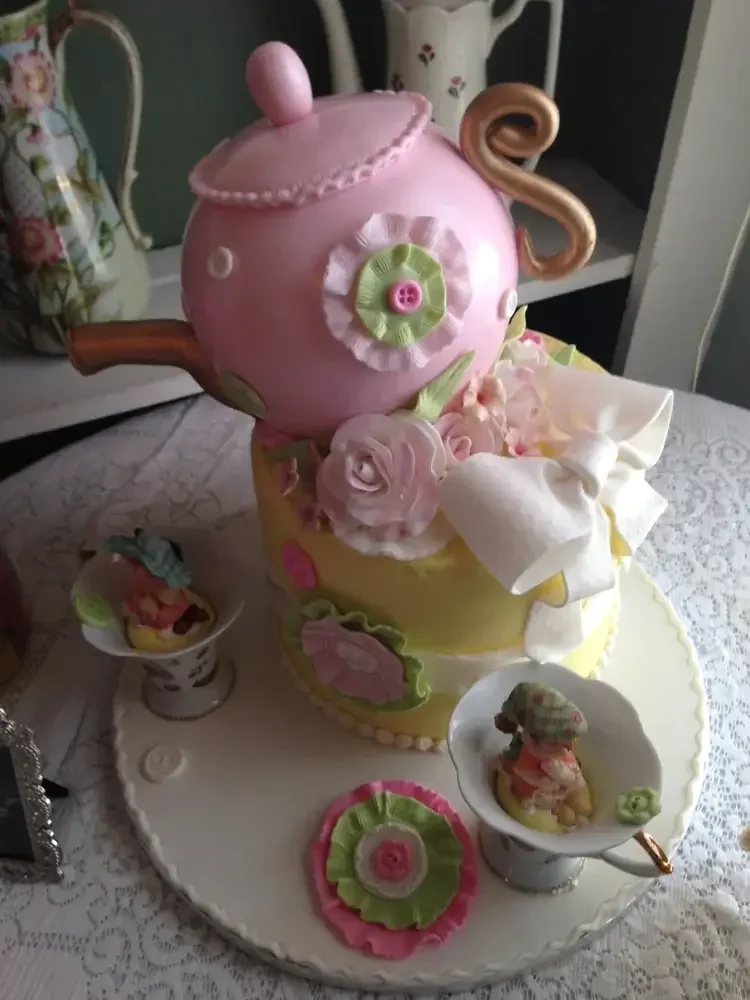Planning a baby shower is a special occasion filled with love, joy, and anticipation. Whether you are celebrating a first child or welcoming another little one into the family, finding the right venue is essential. For those seeking a sophisticated, cozy, and memorable setting, Serenity Garden Tea House in West Palm Beach offers the perfect combination of charm, comfort, and elegance.
This unique tea room has become one of the most beloved baby shower venues in West Palm Beach, known for its beautiful atmosphere, refined menu, and warm hospitality.
Why Choose a High Tea Baby Shower?
A high tea baby shower is a timeless and elegant way to celebrate. It allows guests to enjoy delicious food, aromatic teas, and great conversation in a relaxed, stylish environment. Unlike traditional restaurant settings, a tea house offers a slower pace and a personal touch that makes every celebration feel meaningful.
High tea is the ideal choice for intimate gatherings of friends and family. Guests can savor finger sandwiches, freshly baked scones, and sweet treats served on fine china. This sophisticated twist on the classic baby shower transforms the occasion into a cherished memory.
At Serenity Garden Tea House, every detail is designed to make your event special. From personalized tea selections to beautiful table settings, the team ensures that your celebration reflects your unique vision.
A Hidden Gem in West Palm Beach
Located in a charming historic building, Serenity Garden Tea House exudes vintage beauty and calm sophistication. Its soft lighting, antique décor, and friendly atmosphere create the perfect backdrop for your baby shower.
Guests can choose between the cozy indoor tea room or the enchanting outdoor garden area. The lush garden, filled with flowers and greenery, is ideal for daytime gatherings and photo opportunities. It is a favorite among event planners who appreciate venues that balance comfort with style.
This tea house is also a top choice for bridal shower venues and birthday tea parties in West Palm Beach, making it a versatile location for any milestone event.
Customized Baby Shower Packages
Serenity Garden Tea House offers flexible event packages tailored to your celebration’s size, theme, and preferences. The team works closely with each host to create a menu and setup that perfectly suits your needs.
Their private event tea room can accommodate small to medium sized groups and features personalized décor, dedicated service, and a menu that includes:
A variety of loose leaf teas
Finger sandwiches with classic and modern fillings
Freshly baked scones with cream and preserves
Elegant desserts and pastries
If you are looking for something extra special, you can include custom touches such as floral arrangements, gift tables, or themed centerpieces. The staff is happy to coordinate these details to make your day stress free and enjoyable.
A Touch of Irish Hospitality
One of the things that make Serenity Garden Tea House stand out is its heritage. The establishment is proudly Irish owned and operated, which brings a unique blend of European charm and friendly service to every event.
The owners’ passion for creating a welcoming, relaxing environment is evident in every detail, from the way the tea is poured to the presentation of each dish. Their Irish roots inspire the warmth, laughter, and camaraderie that make baby showers here feel truly special.
An Elegant Menu to Remember
No baby shower is complete without delightful food and drink. The high tea menu at Serenity Garden Tea House features an array of light bites and sweets that pair beautifully with their extensive tea selection.
Popular offerings include:
Cucumber and cream cheese sandwiches
Egg salad and chicken salad croissants
Fruit tarts, petit fours, and lemon bars
Traditional scones served with Devonshire cream and jam
Every dish is freshly prepared with quality ingredients, ensuring that your guests are treated to a delicious and memorable experience.
For those who fall in love with the teas served during the event, the Palm Beach Teas Online Store allows you to purchase the same blends to enjoy at home or gift to guests as a keepsake.
The Perfect Venue for All Celebrations
While Serenity Garden Tea House is a top rated choice for baby shower venues in West Palm Beach, it also hosts other private gatherings. These include bridal showers, birthday tea parties, holiday luncheons, and corporate events.
The tea house’s flexible spaces make it easy to create the right atmosphere for any occasion. The indoor dining room provides a classic and cozy setting, while the garden event space offers a refreshing outdoor option surrounded by nature.
Every event includes attentive service, fine dining, and the serene ambiance that has made Serenity Garden a favorite for locals and visitors alike.
How to Plan Your Baby Shower at Serenity Garden Tea House
Planning your baby shower at Serenity Garden Tea House is a simple and enjoyable process. Here is how it works:
Visit the website – Go to Serenity Garden Tea House to explore available event options and view sample menus.
Contact the team – Reach out to discuss your party size, preferred date, and special requests.
Choose your menu and décor – The staff will help you design a tea service and theme that matches your celebration.
Relax and enjoy the day – On the day of your event, everything will be prepared to perfection so you can focus on celebrating with your loved ones.
The team’s attention to detail and commitment to excellence ensure that your baby shower will be as beautiful as it is memorable.
Why Locals Love Serenity Garden Tea House
Serenity Garden Tea House is more than just a venue. It is a destination that captures the spirit of togetherness and celebration. Locals love it for its:
Elegant and relaxed setting
Delicious high tea service
Personalized event planning
Friendly and attentive staff
Convenient West Palm Beach location
Whether you are a bride to be, a parent to be, or an event planner searching for the perfect setting, this tea house delivers an experience filled with joy, flavor, and serenity.
Conclusion
Serenity Garden Tea House offers one of the most charming and intimate baby shower venues in West Palm Beach. With its vintage inspired setting, high tea service, and personalized event options, it provides the perfect atmosphere for celebrating new beginnings.
From the first cup of tea to the last toast, every detail is designed to create a beautiful and memorable experience for you and your guests.
Frequently Asked Questions
1. How many guests can Serenity Garden Tea House accommodate for a baby shower?
The tea house can host small to medium sized gatherings. You can inquire about specific capacity and space options on the events page.
2. Can I customize the menu for my baby shower?
Yes. Serenity Garden offers personalized menu options and can accommodate dietary preferences or themed requests.
3. Do you offer private rooms for events?
Yes. The tea house features a lovely private event tea room that provides an intimate setting for baby showers and other celebrations.
4. Is Serenity Garden Tea House locally owned?
Yes. It is proudly Irish owned and operated, bringing warmth, charm, and European hospitality to every event.
5. Can guests purchase teas as party favors?
Absolutely. You can buy premium teas from the Palm Beach Teas Shopify store as thoughtful gifts or event favors.

























